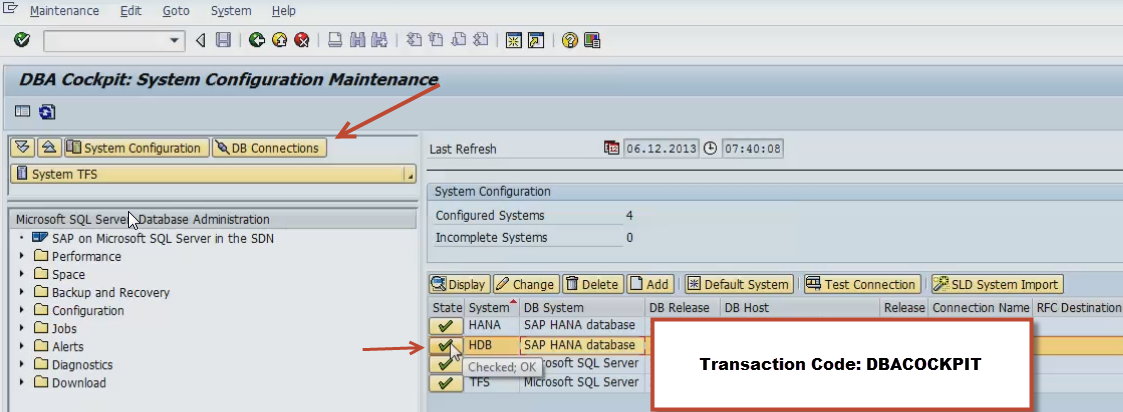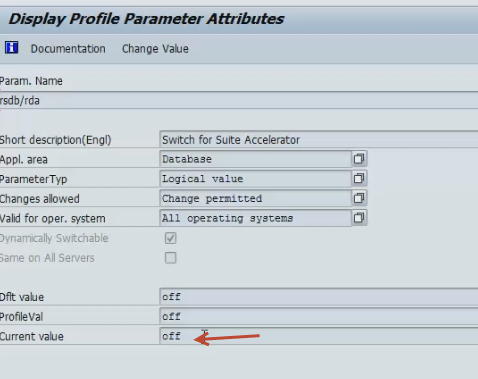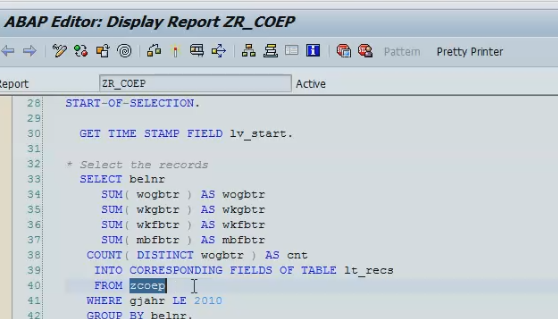
- SAP Community
- Products and Technology
- Technology
- Technology Blogs by SAP
- Knowledge Sharing from TechEd Bangalore - SAP Busi...
- Subscribe to RSS Feed
- Mark as New
- Mark as Read
- Bookmark
- Subscribe
- Printer Friendly Page
- Report Inappropriate Content
Introduction:
This topic will explain the advantages of SAP Business Application Accelerator which Allows leveraging HANA for current programs without changing them or without disruption or without changing the code. SAP Business Application Accelerator allows redirection of database queries (like select, open cursor) to a secondary database connection. In this case we are going to use HANA as secondary DB.
This blog doesn’t explains you the HANA Specific Application Accelerators like CO-PA or Moving data intensive operations down to HANA, rather a simple use case to see the advantages of using SAP Business Application Accelerator and HANA Database on the current existing programs without changing the code by calculating the runtime of the program.
How it works:
Runtime intensive table selects can be redirected to the HANA database instead being selected from the primary database.
- Selected tables are replicated using SLT in near real-time to the HANA database
- The following parameters identify the program context for reading from the HANA database:
- Tables / DB Views
- Main program
- Batch job name (wildcards supported)
- On kernel level a select statement within this configuration is redirected to HANA – no changes on program required
Use Cases:
- Reports reading data from very large ERP tables
- Reports that evaluate large tables by different characteristics – so that there is no index on all access path
- Batch Jobs that often reports that run during period end closing
System prerequisite:
Kernel version 7.21 and the SAP Business Application Accelerator Add On.
Demo - Overview:

Demo - Step-by-Step:
- Establishing a Connection a connection between ERP system and HANA DB. In this case we are connecting our ERP System to HANA Database (System – HDB). We can also check available DB Connections, Indicated with arrow in the screen shot.

2. SLT: SLT is a process to replicate the data from primary to secondary database. In this case we will identify time intensive – tables / program combinations to be redirected to HANA and not to the primary database for read access.
3. In this demo program: ZR_COEP is used which uses the ZCEOP table. This table will be replicated in HANA DB using SLT.
4. Maintaining the Configuration by preparing the XML with scenario, program and table names after identifying the program and table.

5. Configuration is maintained by using RDA_MAINTAIN program. First XML will be upload using the ‘Upload Scenario’. Once the XML is uploaded, a database connection has to be maintained (second screen shot) and last we will Activate the Scenario. Configuration entries are maintained in RDA_CONTROL, RDA_CONFIG and RDA_CONTEXT table. You can validate your configuration entries here.


6. Profile Parameters rsdb/rda is used to redirect the DBs using RZ11 transaction Code. It acts like a switch between two databases. Please see the prerequisite to avail the profile parameters. Please make sure the scenario which we have uploaded in previous step has to in active status, only then the redirection of DBs works.


7. Analyzing the Runtime by testing the runtime of the program in both DBs by setting profile parameter values as on/off.
Test program is written with a select statement using aggregate functions.
It takes an average of 25 seconds to pick the data from primary database.
Now turn on the profile parameter and execute. Total number of records in HANA DB is more than Primary DB (an additional record was added).
It only took 4 seconds to run the program.



Limitations:
- SAP Business Application Accelerator can not be used for programs where delayed replication of a table could lead to inconsistencies
- No update scenarios during interactive reporting on replicated tables possible
- SAP Business Application Accelerator does not leverage all HANA capabilities and does therefore not reach the same performance as possible with modeling in HANA Modeling Studio or with HANA Application Accelerators (e.g. COPA Accelerator)
- Check Note 1694697
- SAP Managed Tags:
- SAP HANA
You must be a registered user to add a comment. If you've already registered, sign in. Otherwise, register and sign in.
-
ABAP CDS Views - CDC (Change Data Capture)
2 -
AI
1 -
Analyze Workload Data
1 -
BTP
1 -
Business and IT Integration
2 -
Business application stu
1 -
Business Technology Platform
1 -
Business Trends
1,658 -
Business Trends
91 -
CAP
1 -
cf
1 -
Cloud Foundry
1 -
Confluent
1 -
Customer COE Basics and Fundamentals
1 -
Customer COE Latest and Greatest
3 -
Customer Data Browser app
1 -
Data Analysis Tool
1 -
data migration
1 -
data transfer
1 -
Datasphere
2 -
Event Information
1,400 -
Event Information
66 -
Expert
1 -
Expert Insights
177 -
Expert Insights
293 -
General
1 -
Google cloud
1 -
Google Next'24
1 -
Kafka
1 -
Life at SAP
780 -
Life at SAP
13 -
Migrate your Data App
1 -
MTA
1 -
Network Performance Analysis
1 -
NodeJS
1 -
PDF
1 -
POC
1 -
Product Updates
4,577 -
Product Updates
340 -
Replication Flow
1 -
RisewithSAP
1 -
SAP BTP
1 -
SAP BTP Cloud Foundry
1 -
SAP Cloud ALM
1 -
SAP Cloud Application Programming Model
1 -
SAP Datasphere
2 -
SAP S4HANA Cloud
1 -
SAP S4HANA Migration Cockpit
1 -
Technology Updates
6,873 -
Technology Updates
419 -
Workload Fluctuations
1
- How to use AI services to translate Picklists in SAP SuccessFactors - An example in Technology Blogs by SAP
- Accelerate Business Process Development with SAP Build Process Automation Pre-Built Content in Technology Blogs by SAP
- Analyze Expensive ABAP Workload in the Cloud with Work Process Sampling in Technology Blogs by SAP
- How to add dynamically formcell or button table in SectionedTable0 of Current(Main) MDK Page in Technology Q&A
- Comprehensive Guideline to SAP VMS in Technology Blogs by Members
| User | Count |
|---|---|
| 35 | |
| 25 | |
| 14 | |
| 7 | |
| 7 | |
| 6 | |
| 6 | |
| 5 | |
| 4 | |
| 4 |